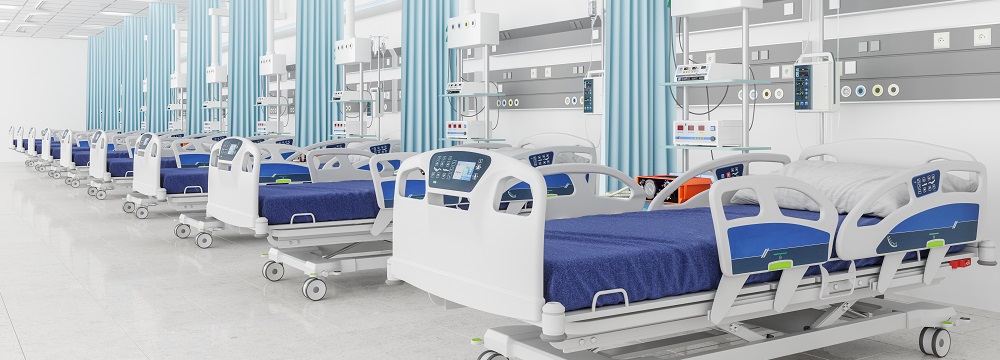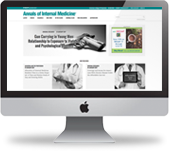
Periop in a pandemic
Without data or guidelines on when and whether to perform surgery on the many patients who have had COVID-19 infections after vaccination, hospitals and hospitalists are developing their own plans and protocols.
A number of factors are available to guide decisions about surgery in vaccinated patients who have had COVID-19, including clinician judgment, patient preference, and hospital finances.
Unfortunately, research evidence is not yet on that list.
Last month, two groups of expert societies from the U.S. and U.K. released updated guidance on the timing of surgery after COVID-19, but both explicitly noted the lack of data relevant to many of today's patients. “There is currently no evidence on peri-operative outcomes after SARS-CoV-2 vaccination and the omicron variant,” said the Feb. 22 statement from the Association of Anaesthetists, Royal College of Surgeons of England, and other English societies.
That statement goes on to advise avoiding elective surgery for seven weeks after infection in vaccinated patients “unless the benefits of doing so exceed the risk of waiting,” while the guidance from the American Society of Anesthesiologists and Anesthesia Patient Safety Foundation, also published Feb. 22, simply says, “The evidence is insufficient to make recommendations for those who become infected after COVID vaccination.”
Meanwhile, the omicron surge has swelled the affected patient population. “The volume of patients coming through our preop clinic, coming through the emergency room or hospital, who need a surgery and have had COVID in the last two months has been astronomical. It's been drinking from a firehose,” said Avital O’Glasser, MD, FACP, associate professor of medicine in the division of hospital medicine and medical director of the preop clinic at Oregon Health & Science University in Portland.
She and other perioperative care experts offered their advice to hospitalists on assessing surgical patients in this uncertain environment.
What we do know
At the beginning of the pandemic, the primary reason for avoiding surgery soon after COVID-19 was concern about spreading infection. But then it gradually became apparent that the disease also affected surgical outcomes, Dr. O’Glasser recalled.
“As a medical community, we learned that COVID was more than just a cold, was more than just a bad flu, and not only affects the lungs, but could affect kidneys, liver, heart, clotting function,” she said.
In May 2020, a retrospective study from the COVIDSurg Collaborative quantified how COVID-19 worsened postoperative outcomes. The analysis of 1,128 patients who had surgery while infected with the virus found a 30-day mortality rate of 23.8% and pulmonary complications in 51.2%, according to results published in The Lancet.
A subsequent study from the same research group added information on when it might be safe to schedule surgery. It included 3,127 patients with a preoperative SARS-CoV-2 diagnosis, finding that their mortality risk was elevated if they had surgery up to seven weeks after infection; after that, the risk was similar to patients who hadn't had COVID-19.
The elevation in risk appeared consistent across severities of illness, noted Steven Cohn, MD, MACP, professor emeritus at the University of Miami and author of the book “Decision Making in Perioperative Medicine: Clinical Pearls,” published in early 2021 by ACP in partnership with McGraw-Hill. “It didn't seem to matter if it was symptomatic or asymptomatic, or if patients had been hospitalized or in the ICU,” he said.
That study, published by Anaesthesia on March 9, 2021, has guided care since and “was the primary genesis” for the U.S. societies' ongoing recommendation to wait seven weeks in unvaccinated patients, said Randall M. Clark, MD, president of the American Society of Anesthesiologists and a professor of anesthesiology at the University of Colorado in Denver.
However, the data lost some of their relevance almost as soon as they were published. “That March 2021 article came out just as vaccines were being made available to the general public,” said Dr. O’Glasser.
“And it was with variants different than omicron,” noted Dr. Clark. “There is a lag between when patients are studied and what's currently happening in our population.” New data on surgical outcomes in vaccinated patients with breakthrough infections are expected from the COVIDSurg Collaborative in upcoming weeks, the experts said.
Operating in uncertainty
But what should be done about vaccinated patients who have had COVID-19 and need or want surgery now, during the lag?
“Every institution, unfortunately, is doing it differently,” said Nidhi Rohatgi, MD, MS, associate professor of medicine and section chief of surgical comanagement for the division of hospital medicine at Stanford University in Stanford, Calif., and coauthor of a Viewpoint on preoperative evaluation in patients with a history of COVID-19, published by JAMA Surgery on Jan. 12.
That assessment was seconded by Dr. Cohn. “A number of my colleagues have said that they don't follow the seven-week rule,” he said. “From people I've spoken to, as few as 10 days after the diagnosis … would be the earliest. Somewhere closer to four weeks afterward seems like it's coming into play a little bit more, which would be similar to what we recommend after having had pneumonia.”
In the absence of guidelines on vaccinated patients, Dr. Clark's advice is to think about COVID-19 like some other, older viruses. “We would expect clinicians to fall back on how they would treat patients for serious respiratory infections,” said Dr. Clark. “The primary determination for each person in deciding when to have surgery should be primarily related to symptomatology.”
The milder symptoms of COVID-19 in patients who were vaccinated or had the omicron variant are often being used as an argument for doing surgery sooner, Dr. O’Glasser noted. “Does that mean the risk of perioperative complications is lower? That's a great question, but we have no data.”
What clinicians face instead is pressure to get surgeries completed. “The estimate of canceled surgeries or lost surgery slots is in the millions,” said Dr. O’Glasser.
That's a big enough problem for hospitals that it has driven care, added Dr. Rohatgi. “We have a backlog of surgeries and the financial situation of multiple hospitals, because of how hard COVID hit all of us, has directed a lot of practice,” she said.
It's not just the C-suite that wants these surgeries scheduled. “My surgical colleagues are trained to care for patients by delivering surgical care and the moral injury they are experiencing … It's agonizing to see them not being able to deliver care the way they're trained to,” said Dr. O’Glasser. “We've had patients that have been verbally abusive when they're told that they need to wait.”
Some patients who were severely ill with COVID-19 are leery of returning to the hospital, but those who were less sick are generally eager to go forward with an operation as scheduled, said Dr. Rohatgi. “The patients are just very thankful and grateful that they're getting the surgery, because that's what's bothering them more.”
Preop evaluation
The other uncertainty currently bothering perioperative physicians is how to assess patients who've had COVID-19, whether it's been less than seven weeks ago or much longer.
“The first step, which wasn't occurring at most institutions almost the first year of the pandemic, is to include the history of COVID itself in the preoperative risk assessment, just like you would include heart failure or history of myocardial infarction. What was the severity, what medications if any did they receive, what is their vaccination status, are they immunocompromised or not?” said Dr. Rohatgi.
Dig into the patient's current status in the history, too, advised Dr. Cohn. “If you get anything to suggest that a patient has ongoing or lingering symptoms, or some effects of having had the disease, primarily cardiopulmonary types of things, maybe be a little more aggressive in investigating,” he said.
That investigation can entail additional testing, but keep in mind the downsides of that, including cost and incidental findings. “And what do you do with the results? That's the other problem,” said Dr. Cohn, who offered some alternatives to labs.
“It's going to be shortness of breath more than anything,” he said. “If you walk them around, ask how many blocks they can walk or flights of stairs they can climb, that may be helpful in trying to determine if they have any residual effect without resorting to extra tests.”
Dr. O’Glasser and colleagues shared their preoperative testing strategy for COVID-19 survivors in a commentary published by Perioperative Medicine on Jan. 7. A table recommends whether to perform tests such as chest X-ray, echocardiogram, and D-dimer based on the type of surgery and whether the patient had symptomatic or asymptomatic infection.
“We're still doing very, very granular history and physicals and we're still doing extra labs,” she said. The detailed testing has in some cases revealed previously undiagnosed cardiac complications of COVID-19, Dr. O’Glasser added.
In patients who have already noticed lingering effects of COVID-19, the assessment should be even more careful, the experts said. “I would say, ‘Slow down. What would you do if this were a patient who weren't scheduled for surgery, but had symptoms consistent with possible long COVID?’” said Dr. O’Glasser.
Look for pulmonary or cardiac problems if patients report shortness of breath or even just fatigue, she advised. And consider delaying surgery further if any ongoing symptoms are identified.
“If somebody says, ‘I'm still having brain fog,’ I would say, ‘Just like somebody who has had a severe concussion, I think you need to recover a few more weeks before you put your brain through anesthesia and the stress of surgery,’” Dr. O’Glasser said.
It can sometimes be hard to tell if a symptom is a sequela of COVID-19, though, added Dr. Rohatgi. “Many of the patients have lingering symptoms of fatigue or maybe some mild shortness of breath. However, a patient who cannot mobilize from a bad knee or a bad spine will also get deconditioned over time and also have some fatigue, also have some mild dyspnea,” she said.
Deconditioning has been a common side effect of the pandemic, affecting even patients who never had COVID-19, she noted. “Patients have not seen a doctor physically for a year or two,” Dr. Rohatgi said. “When they come in, it takes a lot to get them through the surgeries and optimize them.”
Conditioning before and after surgery is helpful whether or not patients have had COVID-19, and greater attention to surgical patients' general health could be one of the silver linings of the pandemic, Dr. O’Glasser hopes.
“I've extended some of these lessons to my broader practice,” she said. “Let's channel this energy. … We know in perioperative medicine that patient-centered optimization is going to improve outcomes.”
It all comes back to Dr. Rohatgi's top tip for perioperative assessment of COVID-19 patients. “Never stop being a good doctor,” she said. “Your history and physical will stand the test of time. Studies come and go.”



